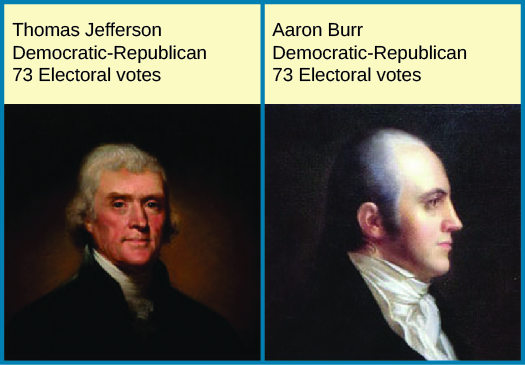| << Chapter < Page | Chapter >> Page > |
When the U.S. Constitution was drafted, its authors were certainly aware that political parties existed in other countries (like Great Britain), but they hoped to avoid them in the United States. They felt the importance of states in the U.S. federal structure would make it difficult for national parties to form. They also hoped that having a college of electors vote for the executive branch, with the top two vote-getters becoming president and vice president, would discourage the formation of parties. Their system worked for the first two presidential elections, when essentially all the electors voted for George Washington to serve as president. But by 1796, the Federalist and Anti-Federalist camps had organized into electoral coalitions. The Anti-Federalists joined with many others active in the process to become known as the Democratic-Republicans. The Federalist John Adams won the Electoral College vote, but his authority was undermined when the vice presidency went to Democratic-Republican Thomas Jefferson, who finished second. Four years later, the Democratic-Republicans managed to avoid this outcome by coordinating the electors to vote for their top two candidates. But when the vote ended in a tie, it was ultimately left to Congress to decide who would be the third president of the United States ( [link] ).

In an effort to prevent a similar outcome in the future, Congress and the states voted to ratify the Twelfth Amendment, which went into effect in 1804. This amendment changed the rules so that the president and vice president would be selected through separate elections within the Electoral College, and it altered the method that Congress used to fill the offices in the event that no candidate won a majority. The amendment essentially endorsed the new party system and helped prevent future controversies. It also served as an early effort by the two parties to collude to make it harder for an outsider to win the presidency.
Does the process of selecting the executive branch need to be reformed so that the people elect the president and vice president directly, rather than through the Electoral College? Should the people vote separately on each office rather than voting for both at the same time? Explain your reasoning.
Growing regional tensions eroded the Federalist Party’s ability to coordinate elites, and it eventually collapsed following its opposition to the War of 1812.

Notification Switch
Would you like to follow the 'American government' conversation and receive update notifications?